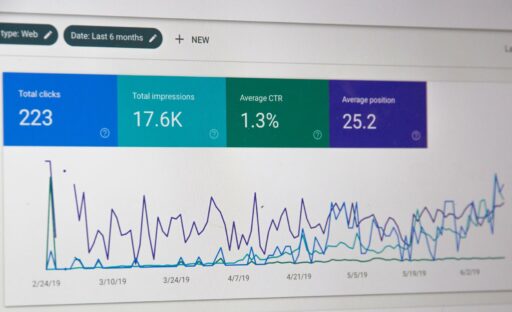Once upon a time, the worst case scenario for most businesses involved burglary, fire, or natural disasters. That’s why people developed insurance policies to cover any potential losses to merchandise, property, or records. These days, however, businesses not only have physical premises, but an online presence as well. While this virtual storefront serves as a powerful marketing tool, it forces owners and customers to trust computers with their information and transactions. What happens when this trust is betrayed?
We’ve all heard disturbing stories of data breaches, identity theft, hacking and shutdowns. It’s the new reality we have to accept when relying on computers for business. If you get caught up in such stories, it’s easy to feel paranoid, like you’re in a horror film where the killer could strike from any direction at any moment. Maybe it’s fun to get scared at the theatre, but you don’t have to feel this way about your website.
In the spirit of Halloween, we’re going to look at a few website “horror stories” that can really happen but which are quite avoidable if you take some basic precautions.
1. Losing Your Website
Yes, this is just what it sounds like. Your website simply “disappears.” Signs that this has happened include repeatedly getting an error page when you enter the web address or seeing “the white screen of death” when there are no coding errors.
There could be a variety of causes, from hacking to a server malfunction. If you came to us with a lost site, we wouldn’t get technical, but would first ask, “Did you make a backup?” If the answer is “No,” we would do our best to retrieve the site before recommending a rebuild. On the other hand, if you answered “Yes,” we would ask, “Where did you save the backup?” If you say, “In the same place as the website,” we would likely have to rebuild the site, because chances are the backup is lost or compromised too.
The moral of the story is: back up your website in a safe place! We recommend using the BackupBuddy plugin, which allows you to store your backups in secure offsite locations such as BackupBuddy Stash, Amazon S3, Dropbox, Rackspace Cloud, FTP or email. BackupBuddy also allows you to set up an automatic backup schedule.
2. The White Screen of Death
At some point in time you will see the “white screen of death” where your WordPress site should be. This ghostly apparition may appear after you’ve edited a template file, updated a plugin, or installed WordPress. Sometimes it will even speak to you in unearthly language like “Parse error on line 118 of page.php.” Don’t be afraid! Your database hasn’t died; it’s just trying to communicate with you about a coding error, but it can’t speak English…because it’s a computer.
In the event you don’t speak PHP either, ask your web developer to take a look. The solution can be as quick and easy as adding a closing ?> tag in a template file.
3. Unsecured Data
eCommerce is booming and many businesses now have an online shop where customers can purchase products with the click of a button. Common payment methods include PayPal, Stripe and credit card. While processors like PayPal have pretty tight security, there is still the possibility that hackers could access sensitive information on its way from the customer’s computer to your server. Any time a customer enters their billing information or login details, that data must pass through one or more computers before it reaches your database. All it takes is ONE breach to ruin the trust relationship between you and your customers. If that happens you really will think you’re in a horror movie.
We recommend obtaining an SSL Certificate for your online store BEFORE a breach occurs. This certificate will establish a secure connection with the customer’s browser and encrypt sensitive data so that no computer can read it except your server. It will also verify that customers are sending information to your server and not to a hacker’s server. This is one of the most important purchases you will ever make for your business.
4. Hacker’s Paradise
It’s a dreadful feeling to wake up and find your financial planning website replaced by a porn site or to see foreign files in the same directory as your WordPress theme. To prevent your stomach from turning like this, make sure you create strong login details for your website. For starters, don’t make your username “admin.” Try a personal name, perhaps with some numbers and symbols. As for the password, there are plenty of strong password generators on the Internet that can spit out a hard-to-hack string of characters. For extra security, keep each set of login details unique to that site. Don’t recycle.
The same goes with FTP details, which you’ll receive from your developer. Don’t customize these logins (especially the password) with names or easy words; use randomly generated strings, the more complex the better. And once you receive them, be careful about sharing them with anyone except the people working directly on your site. Even then, you shouldn’t share them with, say, your social media manager.
So guard your WordPress and FTP login details with your life (well, maybe not your life, but just keep them safe, ok?).
5. Possessed Plugins
Lastly, we have the chaos created by incompatible plugins. You can’t always predict when this will happen. Sometimes you’ll upgrade a plugin or your theme (or both) and suddenly your website starts acting a bit demented. When making regular updates, you should first check whether any issues have been reported by users. It may even be advisable to postpone updates until there is more user feedback. Also make sure you have the option to back up your site prior to the update. As we mentioned above, you can do this with BackupBuddy. One benefit of a website maintenance plan is that we research compatibility and make backups of your site, so that you don’t have to worry about it.
If you’re experiencing any of these “horror stories,” please feel free to get in touch with us for a free, no-obligation assessment of your needs. Also check out our monthly maintenance plans, which can give you incredible peace of mind.
Image © mythja
Author

James Fulton
Since founding the company in 2012, James has been the driving force behind SGD's success. As a visionary leader, he guides the SGD team, encouraging them to continually excel in digital design. James inspires a culture of growth, challenging each team member to surpass their own limits and set new standards in the field. This commitment to excellence not only propels personal development but also ensures SGD consistently delivers exceptional results for its clients.
Unlock Weekly Insights To Improve Your Website
Want to improve your website and digital marketing? Sign up to Marketing Monday for practical, up-to-date strategies on SEO, Google Ads, and website performance—delivered weekly.
No fluff, just results-driven advice. Unsubscribe anytime.
Next Article
Client Interview Series: OMP Sports Management
October 14, 2015Start a Project









